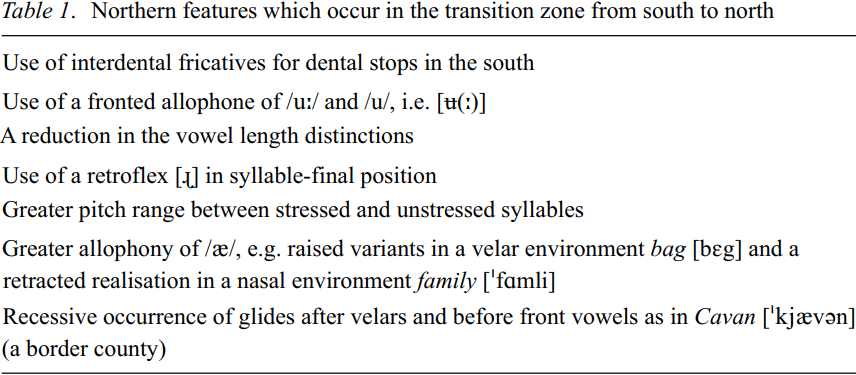

Grammar


Tenses


Present

Present Simple

Present Continuous

Present Perfect

Present Perfect Continuous


Past

Past Simple

Past Continuous

Past Perfect

Past Perfect Continuous


Future

Future Simple

Future Continuous

Future Perfect

Future Perfect Continuous


Parts Of Speech


Nouns

Countable and uncountable nouns

Verbal nouns

Singular and Plural nouns

Proper nouns

Nouns gender

Nouns definition

Concrete nouns

Abstract nouns

Common nouns

Collective nouns

Definition Of Nouns


Verbs

Stative and dynamic verbs

Finite and nonfinite verbs

To be verbs

Transitive and intransitive verbs

Auxiliary verbs

Modal verbs

Regular and irregular verbs

Action verbs


Adverbs

Relative adverbs

Interrogative adverbs

Adverbs of time

Adverbs of place

Adverbs of reason

Adverbs of quantity

Adverbs of manner

Adverbs of frequency

Adverbs of affirmation


Adjectives

Quantitative adjective

Proper adjective

Possessive adjective

Numeral adjective

Interrogative adjective

Distributive adjective

Descriptive adjective

Demonstrative adjective


Pronouns

Subject pronoun

Relative pronoun

Reflexive pronoun

Reciprocal pronoun

Possessive pronoun

Personal pronoun

Interrogative pronoun

Indefinite pronoun

Emphatic pronoun

Distributive pronoun

Demonstrative pronoun


Pre Position


Preposition by function

Time preposition

Reason preposition

Possession preposition

Place preposition

Phrases preposition

Origin preposition

Measure preposition

Direction preposition

Contrast preposition

Agent preposition


Preposition by construction

Simple preposition

Phrase preposition

Double preposition

Compound preposition


Conjunctions

Subordinating conjunction

Correlative conjunction

Coordinating conjunction

Conjunctive adverbs


Interjections

Express calling interjection


Grammar Rules

Passive and Active

Preference

Requests and offers

wishes

Be used to

Some and any

Could have done

Describing people

Giving advices

Possession

Comparative and superlative

Giving Reason

Making Suggestions

Apologizing

Forming questions

Since and for

Directions

Obligation

Adverbials

invitation

Articles

Imaginary condition

Zero conditional

First conditional

Second conditional

Third conditional

Reported speech


Linguistics

Phonetics

Phonology

Linguistics fields

Syntax

Morphology

Semantics

pragmatics

History

Writing

Grammar

Phonetics and Phonology

Semiotics


Reading Comprehension

Elementary

Intermediate

Advanced


Teaching Methods

Teaching Strategies

Assessment
Varieties of Southern Irish English
المؤلف:
Raymond Hickey
المصدر:
A Handbook Of Varieties Of English Phonology
الجزء والصفحة:
72-4
2024-02-16
1129
Varieties of Southern Irish English
It is obvious that linguistically, as well as politically, Ireland is divided into two broad sections, the north and the south. The former consists of the six counties presently within the state of Northern Ireland and of the large county of Donegal which is part of the Republic of Ireland. The north has a complex linguistic landscape of its own with at least two major historical varieties: Ulster Scots, the speech of those directly derived from the original Lowland Scots settlers, and Mid-Ulster English, the speech of those descendants of English settlers to central parts of Ulster. In addition there is the sociolinguistically complex capital, Belfast. Co. Donegal by and large goes with the rest of Ulster in sharing key features of English in the province and also of the varieties of Irish used there.
The north of the country is quite distinct from the south, accents of northerners being immediately recognizable to southerners. A dividing line can be drawn roughly between Sligo, just south of Co. Donegal, and Dundalk on the east coast immediately below the border with Northern Ireland (Ó Baoill 1991). North of this line the accents are distinctly Ulster-like. South of this line the northern features rapidly give way to southern values. The term line here might imply a clearly delimited boundary, perhaps zone might be more accurate, as border counties such as Monaghan, Cavan or Louth show mixed accents which have adopted features from both northern and southern types.
The transition can be clearly seen moving down the east coast: Dundalk has a northern flavor to its speech but this is more or less lost by the time one reaches Drogheda travelling southwards. However, the recordings of A Sound Atlas of Irish English show that key features of northern Irish English, such as mid front vowel breaking, as in save [se:əv] , and /u/-fronting, as in boot  , extend quite far down the east coast, indeed in the case of the latter almost to the border of Co. Dublin.
, extend quite far down the east coast, indeed in the case of the latter almost to the border of Co. Dublin.

 الاكثر قراءة في Phonology
الاكثر قراءة في Phonology
 اخر الاخبار
اخر الاخبار
اخبار العتبة العباسية المقدسة

الآخبار الصحية















 "المهمة".. إصدار قصصي يوثّق القصص الفائزة في مسابقة فتوى الدفاع المقدسة للقصة القصيرة
"المهمة".. إصدار قصصي يوثّق القصص الفائزة في مسابقة فتوى الدفاع المقدسة للقصة القصيرة (نوافذ).. إصدار أدبي يوثق القصص الفائزة في مسابقة الإمام العسكري (عليه السلام)
(نوافذ).. إصدار أدبي يوثق القصص الفائزة في مسابقة الإمام العسكري (عليه السلام) قسم الشؤون الفكرية يصدر مجموعة قصصية بعنوان (قلوب بلا مأوى)
قسم الشؤون الفكرية يصدر مجموعة قصصية بعنوان (قلوب بلا مأوى)


















